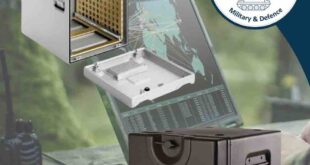Domino Printing Sciences has collaborated with Sappi, a provider of fibre-based packaging products, to determine a laser coding solution for global food brands requiring high-quality codes on barrier paper packaging. Following suitability testing, Domino’s D-Series CO2 laser coders were used to code a range of six different Sappi products and, in all cases, achieved a clean, crisp code without affecting the barrier properties.
“We are truly excited to be able to offer Sappi’s food packaging customers an effective laser coding solution that makes their recyclable product packaging a truly sustainable alternative to plastic composite materials,” says Dr. Stefan Stadler, Team Lead at the Domino Laser Academy. “The market for sustainable product packaging is growing, and demand for alternatives to hard-to-recycle flexible plastics, such as Sappi’s barrier papers, are only set to increase. We were delighted to work with Sappi to explore these new materials to help find the right coding solution for their customers’ individual requirements.”
Coding requirements for barrier papers
Sappi has developed a range of barrier papers to replace conventional, unrecyclable multi-material plastic composites. The product range includes water-based barrier coatings for protection against moisture, oxygen, aroma, grease, and mineral oil.
Typical applications include: block bottom bags for dried ingredients such as sugar and pasta; flow wrappers for snacks, chocolate, and confectionery; and pouches and lids for fresh and processed foods.
Exact coding requirements vary depending on the specific customer application; however, all food packaging lines typically require printing of compulsory best before and use by dates, as well as standard batch and product codes. In addition, many food and beverage manufacturers are now looking for more sophisticated coding solutions, including the application of 2D codes to facilitate data sharing and traceability.
“We are noticing an increase in the number of brands looking to add 2D codes onto their finished packs – often this is to facilitate traceability of products, but also, as a response to consumer demand for more information of the origin of the packed products,” says Mike Zywietz, Product Application Engineer, Sappi.
“It’s not possible to add this kind of information as part of the original packaging design as traceability codes necessitate new information for each batch or individual product,” he continues. “With a laser, our customers can add a 2D code right at the end of the process without necessitating any changes to the printing image or the product packaging design – a new code can be added alongside compulsory code requirements in milliseconds with no additional cost.”
Developing the solution
CO2 lasers are the most suited laser application for paper packaging, so the first step was determining which type of CO2 laser would be most effective. To identify the ideal laser wavelength, Domino’s specialists performed spectroscopic analysis on six different barrier papers from Sappi to identify which laser wavelength had the best interaction with the substrate material.
“Through this initial analysis, we identified our D-Series blue tube CO2 laser as a possible solution for Sappi’s barrier papers,” says Stadler. Further suitability testing identified the D320i blue tube laser as the optimal solution.
In code quality testing, the D320i created crisp, clear codes on the barrier papers for simple messages, such as best before dates and batch codes, and more complex designs, including graphics and scannable 2D codes.
Domino then used 3D imaging to check the depth of the laser engraving to ensure that the substrate was not perforated or compromised; analysis which was confirmed by Alexander Schröder, Product Application Engineer at Sappi´s R&D centre, who performed additional barrier testing on the Domino coded materials.
“We were very impressed with the results of the barrier testing,” says Zywietz. “This, combined with the quality and clarity of the codes, make Domino’s D-Series a good choice for Sappi’s customers.”
Collaborative investment
The project with Sappi is another excellent example of how Domino is working to support manufacturers on their sustainability journey. It follows an equally exciting recent development in laser coding: the Futamura and NatureFlex compostable film project.
As a coding and marking provider, Domino is always looking to collaborate with innovative packaging providers to identify solutions for new sustainable packaging types.
“We want to remain at the forefront of developments in new and emerging packaging materials to ensure that we can continue to meet the needs of our customers in all industries,” concludes Dr. Stefan Stadler.
 Engineer News Network The ultimate online news and information resource for today’s engineer
Engineer News Network The ultimate online news and information resource for today’s engineer





